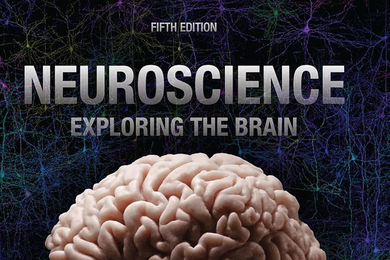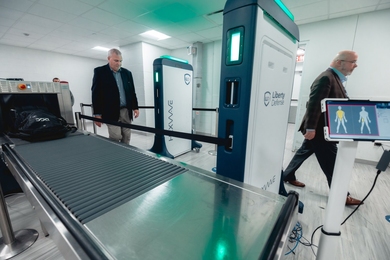Researchers at the Media Laboratory have created a new generation of toys that enable children to explore and understand concepts that were previously reserved for the university classroom.
By embedding computer chips in construction toys, Professors Nicholas Negroponte, Seymour Papert and Mitchel Resnick have added computational capabilities to traditional playthings such as beads and LEGO bricks. The goal is to empower children as designers and inventors, enabling them to learn about the world through their own explorations and experiments. In pilot studies, children have used the new technologies to create their own robotic creatures and even their own scientific instruments.
"These new tools greatly expand the range of things kids can build -- and the range of things they learn while doing so," said Professor Resnick, the Fukutake Associate Professor of Research in Education. "Young children have always learned about the world through direct manipulation and exploration. With our new tools, kids as they grow can continue to learn -- and learn more complex ideas -- with this same approach."
The tools developed at MIT are now featured at Chicago's Museum of Science and Industry, which opened a learning center called "MSI Presents LEGO Mindstorms" earlier this month. At the learning center, children can create robotic LEGO athletes and program them to compete on a 9-by-6-foot playing field. They can also maneuver a robotic rover via small cameras and computers on a model "Mars terrain," using software similar to that used for the actual Pathfinder mission. By programming their creations to have behaviors, children learn advanced concepts of feedback and control.
The MIT approach differs from traditional uses of computers in education, where the emphasis is on desktop machines that "deliver" information to children. "Traditional approaches aim for incremental change. Our goal is fundamental change in the ways people think about learning and education," said Professor Papert, LEGO Professor Emeritus for Learning Research at MIT. "If you provide children with the right tools and materials to play with, they can learn ideas that were reserved for the university classroom in the paper-and-pencil era."
The MIT researchers argue that new tools combining the physical and digital worlds can lead to a learning revolution -- but only if used in appropriate ways. "Many of the software products that are being developed for children today serve to narrow, rather than broaden, children's intellectual horizons," said Professor Negroponte, co-founder and director of the Media Laboratory. "To create a learning revolution, both at home and in the classroom, we need to use technologies that support a new vision of learning."
The MIT team began linking computers to children's toys in 1984, in cooperation with The LEGO Group, which funded the research. Early versions used wires to connect LEGO building materials to desktop computers. Now, taking advantage of the declining size and cost of electronics, the researchers have embedded tiny computers directly inside LEGO bricks and other toys, and they have added communications capabilities so that the toys can "talk" with one another.
In one pilot study, a group of fifth-grade students used the MIT "programmable bricks" to build and program a dinosaur like one they had seen in Jurassic Park.
Younger children are trying out MIT's "digital beads." Each bead has a tiny light and can communicate with neighboring beads along a necklace. By stringing the beads together in different ways, children create different dynamic patterns of light, learning an important scientific lesson on how patterns can emerge from simple, local interactions.
At another site, a 10-year-old girl used the MIT programmable bricks to build an automated bird feeder. Whenever a bird lands, it triggers a sensor, activating a LEGO mechanism that pushes the shutter of a camera, taking a picture of the bird. Now she can keep track of what types of birds come to her feeder, even when she's away at school.
"By building and programming their own scientific instruments, children not only become more motivated in science, they gain a deeper understanding of the scientific concepts underlying their investigations," said Professor Resnick.
The new MIT tools are intended to counter the trend toward "black box" technologies. "The opacity of contemporary technology undermines the child's habit of asking 'How does that work?'" said Professor Papert. "How do automatic controls know what to do? How does an airplane's autopilot 'know' where to go? To say that these machines are 'programmed' invests the idea of programming with mystery. Giving the child the opportunity to build, program and play with models that will perform similar functions takes away the mystery."
A version of this article appeared in MIT Tech Talk on November 26, 1997.





